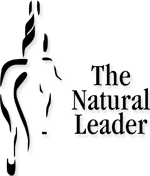 “Titles are granted, but it’s your behaviour that wins you respect.” Opening words to the first practice of The Leadership Challenge.
“Titles are granted, but it’s your behaviour that wins you respect.” Opening words to the first practice of The Leadership Challenge.
Model the Way; Inspire a Shared Vision; Challenge the Process; Enable Others to Act and Encourage the Heart are the Five Practices of The Leadership Challenge and have proven to be a great reference for The Natural Leader programs. This past weekend in High River Alberta, Buck Brannaman capably demonstrated that the five practices of leadership apply equally well to to the pursuit of horsemanship.
“to gain commitment you must be a model of the behaviour you expect of others.” Model the Way is about demonstrating behaviour, it is about being clear on what is important to you and prepared to set the example. Clear on his commitment Brannaman’s presence demonstrates he is prepared to help others in their horsemanship journey.
The words and topics he uses are not often heard in the boardroom, but the concepts couldn’t be closer. Brannaman talks about having a picture in your minds eye of what you want to do before you start. “Do less than what you think it’s going to take and then do what it takes to get the job done.” Through stories of his own struggles, his admiration for his mentor Ray Hunt and humorous interpretations of his teachings Brannaman created and Inspired a Shared Vision.
His word’s don’t simply inspire, but they Challenge the Process engaging people into action. By sharing and demonstrating activities where a person learns from their failure, or as Brannaman puts it “an opportunity to get better” he sets it up for the horse human relationship to improve. The goal of attending the clinic was to improve to horsemanship skills, but as his website claims “horses and life it’s all the same to me.” Brannaman creates possibility, he Enables Others to Act limited only by the level of commitment each is prepared to make. The art of horsemanship is to make the horse look better.
Through his skill Brannaman is able to foster collaboration and build trust, so others believe they too can achieve something they previously thought unattainable, he Encourages the Heart.
Working through the challenge of making my horses look better has taught me, horsemanship and leadership ….. it is all about my behaviour.
The image at the start of the article is a Garcia Spade Bit, an example of the finest in silver, copper and steel craftmanship. While bits always raise controversy in the horse world, it is rarely the bit and always how humans use them. To Brannaman the spade represents the ultimate in trust and communication based on respectful relationship. As his mentor Ray Hunt said “Anyone can ride a horse bridle-less but only those with the highest level of commitment can ride a horse with a spade bit.”

 Known for the Stampede and Spruce Meadows, Calgary is a hub for international competitors and horses. At these levels of competition one can’t help but notice the number of mares represented in the final round of cattle work, that famous eight second ride or the jump- off. It is a gender parity that puts the business community to shame.
Known for the Stampede and Spruce Meadows, Calgary is a hub for international competitors and horses. At these levels of competition one can’t help but notice the number of mares represented in the final round of cattle work, that famous eight second ride or the jump- off. It is a gender parity that puts the business community to shame.